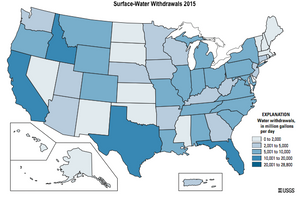Water Quality InformationWritten By Actual Experts
RSSSurface Water: What You Need To Know
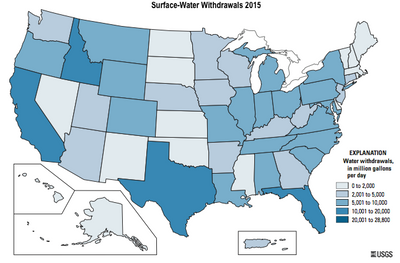
Algal Blooms and Cyanotoxins: What You Need To Know
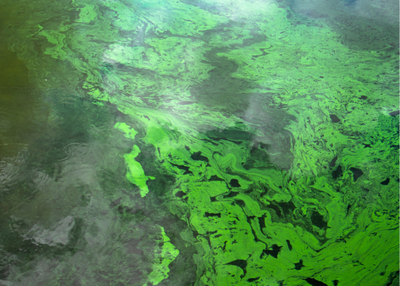
Analies Dyjak | Policy Nerd
Spring and summer are typically the seasons when algal blooms are most prevalent. When water temperatures rise and are accompanied by increased sunlight, it allows for higher rates of photosynthesis. This increased aquatic plant life can often lead to impairments in your drinking water. Here’s everything you need to know about algal blooms, cyanotoxins, and how to ensure your water is safe to drink.
What are Cyanotoxins?
Cyanobacteria naturally occurs in surface water. After an influx of nutrients or a sudden increase in water temperature, cyanobacteria can create Harmful Algal Blooms or HABs. HABs can then produce cyanotoxins, which are harmful to humans and the environment. Microcystins are the most widespread cyanotoxin in the United States, the most toxic being Microcystin-LR. Cyanotoxins are not currently federally regulated but the World Health Organization has provided an advisory level of 1 part per million for Microcystin-LR. Algal blooms and cyanotoxin production are extremely susceptible to changes in the surrounding environment. Toxicity levels can change within a matter of hours, making detection very difficult.
What are the Health Effects of Cyanotoxins in Drinking Water?
Acute exposure to cyanotoxins in drinking water can result in fevers, headaches, joint pain, stomach cramps and mouth ulcers and in severe cases, seizures, liver failure, and respiratory arrest. Studies have also found that long term exposure of low levels to microcystins can promote tumor growth, especially in the liver.
What Increases Levels of Cyanobacteria?
Anthropogenic factors are the predominant reason for an increased frequency and magnitude of cyanotoxin events. Nutrient loading from agricultural practices can cause algal blooms in both fresh and marine water, which also deoxygenates water systems.
How Do Harmful Algal Blooms Affect Water Treatment Facilities?
Municipal water treatment facilities generally do a good job of filtering out algae and cyanobacteria. They face problems when a large influx of algae clogs the filtration media. This can be costly to mitigate and challenging for municipalities if they lack proper equipment. Because cyanotoxins are not regulated, there’s a bit of a grey area as to whether municipalities are obligated to be looking for these contaminants.
As always, we encourage you to take advantage of Hydroviv's "Help No Matter What" technical support policy, where we answer questions related to cyanotoxins, drinking water and water filtration. Drop us a line at hello@hydroviv.com.
Other Articles We Think You Might Enjoy:Raw Water is Bad!
Bioaccumulation in Water Sources
Toldeo and Microcystin Exposure
Polychlorinated Biphenyls (PCBs): Everything You Need To Know
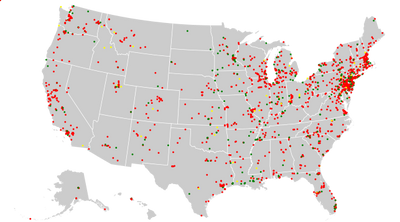
Stephanie Angione, Ph.D. | Scientific Contributor
What Are Polychlorinated Biphenyls (PCBs)?
Polychlorinated Biphenyls (PCBs) are a class of industrial chemical that were widely manufactured in the US from the 1930s through the 1970s for use in electric equipment such as capacitors and transformers, and also as heat transfer fluids, plasticizers, adhesives, fire retardants, inks, lubricants, cutting oils, pesticide extenders, and in carbonless copy paper.While PCB production slowed in the 1960s and was banned completely in the US in 1979, they are still found in industrial applications due to their chemical longevity. The US congressional ban was enacted due to the fact that PCBs are persistent organic pollutants, which create long lasting environmental toxicity and cause harmful health effects. Products that contain PCBs include old fluorescent lighting fixtures, PCB capacitors in old electrical appliances (pre-1978) and certain hydraulic fluids.
Nearly 2 million tons of PCBs have been produced since 1929, 10% of which persists in the environment today. Generally, environmental concentrations of PCBs are low, but due to their chemical inertness they are largely resistant to chemical breakdown or thermal destruction, and thus accumulate in the environment. Additionally, PCBs are highly fat soluble, resulting in the build up of PCBs in animal fat, resulting in higher concentrations of PCBs in top food chain consumers (e.g. predatory fish, large mammals, humans).
Where Are PCBs Found In The Environment?
Polychlorinated Biphenyls accumulate primarily in water sources, organic portions of surface soil, and in living organisms.Water
Surface water that is contaminated with PCB waste generally has high levels of PCBs in sediment, as the PCBs attach to organic matter. PCBs can be slowly released from the sediment into the water and evaporate into the air, especially at higher temperatures.
Air
PCBs have been detected throughout the atmosphere, and can be transported globally through air. Concentrations of PCBs in the air are generally the lowest in rural areas and highest in large cites. Areas that are close to bodies of water that were highly contaminated with PCBs from industrial waste (e.g. Lake Michigan, Hudson River) can have higher air concentrations, due to evaporation of PCBs into the air over time.
Living Organisms
PCBs accumulate in living organisms via bioaccumulation, or uptake from the environment, as well as biomagnification, from consumption along the food chain. Bioaccumulation is typically highest in aquatic species, with bottom feeding species having the highest levels of PCBs due to accumulation in sediment. PCBs biomagnify up the food chain, as bottom feeders like shellfish are eaten by other species, and thus the greatest levels are found in large predatory fish. This process can also occur on land, as PCB contamination in soil is transferred up the food chain to insects, birds and mammals. Thus, one of the largest sources of PCB exposure and accumulation in humans is from food, specifically meat and fish.
How Do PCBs Impact Humans?
While PCBs have been classified as probable human carcinogens, there is no evidence that the low levels of PCBs in the environment cause cancer. Exposure to high levels of PCBs have primarily occurred through workplace exposure in people who work in plants that manufacture the chemicals. Studies of workers exposed to high PCB levels have shown association with certain types of cancer. These high levels of exposure have also been known to cause liver damage, skin lesions called chloracne, and respiratory problems.
Exposure to PCBs during pregnancy can result in developmental and behavioral deficits in newborns. Additionally, there is evidence that reproductive function can be disrupted due to PCB exposure. Women of childbearing age, or those who are pregnant or nursing should be aware of fish and shellfish advisories to limit consumption of PCB contaminated fish.
There are additional studies that suggest PCB exposure can cause health effects including thyroid dysfunction, liver dysfunction, as well as adverse cardiovascular, gastrointestinal, immune, musculoskeletal, and neurological effects.
How Are PCBs Regulated & Monitored In The US?
With so many sources of PCB exposure from food and water sources, the US government has guidelines on the amount of allowable environmental PCB contamination for each.
Food
The FDA enforces a tolerance level in fish of 2 ppm, and overall 0.2 -3.0 ppm for all foods. PCBs in paper food packaging are limited to 10 ppm.
If fishing recreationally and you plan to eat your catch, check if any local fish consumption guidelines exist for your area. The EPA maintains a national database of fish and shellfish advisories issued by each state. These consumption advisories may recommend limiting the amount of a certain fish consumed, or from specific waters or water sources. As of 2011, five areas have advisories for PCBs in freshwater sources (Missouri, Minnesota, Maryland, Indiana, and District of Columbia) and nine states (Connecticut, Delaware, Maine, Maryland, Massachusetts, New Hampshire, New Jersey, New York, and Rhode Island) have PCB advisories for coastal waters.
Drinking Water
Under the Clean Water Act, industrial discharge of Polychlorinated Biphenyls in water is prohibited. The goal is to reach zero contamination in drinking water, but the enforceable maximum level is 0.0005 part per million (ppm). Additionally, industries are required to report spills or accidental releases to the EPA.
Routine monitoring of PCB levels in drinking water require the water supplier to maintain the limit enforced by the EPA and must make the data regarding water quality and contaminants public. Every year, the EPA requires water suppliers nationwide to provide a Consumer Confidence Report (CCR), which will include information about water treatment and any known contaminants. These reports are available on the EPA website and should be available on your water company’s website. Additionally, the supplier is required to alert customers of increased levels of PCB contamination as soon as possible.
If you get water from a household well, the local health department should have information about ground water quality and contaminants of concern, but it is often a good idea to have your water tested by a certified laboratory if you are worried about PCB (or other) contaminants. The EPA’s Safe Drinking Water Hotline (800-426-4791) can provide additional resources in your local area.
How Can I Remove PCBs From My Water?
If your water has high levels of PCBs in it, the water should also not be used to drink, prepare or cook food, or given to pets for consumption without first treating it. Fortunately, PCBs are effectively removed from water by filters that use activated carbon as part of their active filtration media blend.
Hydroviv makes it our business to help you better understand your water. As always, feel free to take advantage of our “help no matter what” approach to technical support! Our water nerds will work to answer your questions, even if you have no intention of purchasing one of our water filters. Reach out by dropping us an email (hello@hydroviv.com) or through our live chat. You can also find us on Twitter or Facebook!
Other Articles We Think You'll Enjoy
What You Need To Know About Mercury Contamination In WaterWhat Are Volatile Organic Compounds? How Do They Contaminate Water?
Why TDS Measurements Don't Tell You Anything About Water Quality
Chromium 6 in Wastewater Spilled Into Lake Michigan
Eric Roy, Ph.D. | Scientific Founder
This Tuesday, US EPA reported that US Steel Corporation spilled a large (but undisclosed) amount of chromium 6-containing wastewater into a Lake Michigan Tributary, and about 20 miles from the location where the City of Chicago draws drinking water from. This past fall, we wrote an article the basics of chromium 6 in drinking water, but the focus of today's article is specifically about the recent spill into Lake Michigan.
Where Did The Chromium 6 Lake Michigan Spill Occur?
The map below (From Chicago Tribune) shows the location of the spill. It's roughly 20 miles from the 68th Street Water Intake Crib for the City of Chicago.

What Caused The Chromium 6 Lake Michigan Spill?
US Steel reported that a stainless steel joint failure in a pipe caused the release of chromium 6-contaminated wastewater into the environment. The pipe contained wastewater from an electroplating process.
Is Water Quality Impacted by Chromium 6 Contamination?
Beaches and parks within a 3 mile vicinity of the spill were closed down. Several cities that draw water from Lake Michigan stopped pulling water. The City of Chicago began "Emergency Testing" of water near source water intakes.
Data and statements from EPA from water tests seem to be in conflict. On one hand, EPA says that they're not seeing anything unusual, but there are measurements taken more than a mile from the spill where chromium 6 concentrations are roughly 10x higher than baseline measurements taken from more offshore locations over the past 3 years.
It's important to point out that chromium 6 is extremely toxic, it is NOT REGULATED ON ITS OWN. EPA does not differentiate between carcinogenic chromium 6 and chromium (III), which is an essential nutrient for humans. Absurdity of this aside, remember that Chicago's drinking water (which is pulled from Lake Michigan) has a 3 year average chromium 6 concentration of 190 parts per trillion, which is nearly 20 times higher than the level associated with negligible risk.
How Do I Remove Chromium 6 From Drinking Water?
To remove chromium 6 from water, you need to filter it. Boiling or freezing water does NOT remove chromium 6, or make it less toxic. We recently wrote a more in-depth article on how to filter chromium 6 from water. We are particularly fond of our approach to water filtration over reverse osmosis for a number of reasons, but both will work.
Other Articles We Think You'll Love
5 Most Important Things To Know About Chromium 6 In Drinking WaterHow To Filter Chromium 6 From Drinking Water
Summary of Problems With Chicago Tap Water
5 Things That Most People Don't Realize About Well Water
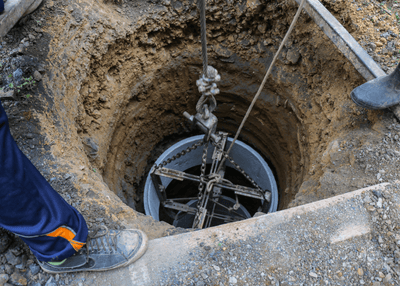
Roughly 15 percent of Americans get their tap water from private wells, and this percentage can rise to 40% in rural states like Maine and Vermont. It's no surprise that we receive a lot of questions from people with wells who are are concerned about water quality.
1. Getting A Well “Checked” Is Not The Same As Comprehensive Water Testing
There is a misconception that if someone gets their private well “checked,” it will reveal water quality problems. Unfortunately, that’s not the way it works. A basic water screening has a lot of "blind spots" and gives no information about levels of lead, arsenic, chromium 6, mercury, or VOCs unless you test specifically for those chemicals. Some states have certain testing requirements, but the scope of testing varies from state to state, and most states do not require comprehensive testing. Many banks require that certain water tests be conducted before they will issue a mortgage, but the goal of this testing is often to ensure that there are no faulty systems in the home, not to protect the health of the residents.
Bottom line: The well's owner is responsible for having tests run. Don't assume that the tests that were done as part of the home buying process were comprehensive.
2. Well Water Contamination Often Comes From Natural Sources, Not Humans
Some private well owners are surprised to learn that they have contaminated water, because there are no obvious contamination sources nearby. This is because some contaminants (like arsenic) can occur naturally groundwater at unsafe levels.
3. Well Water Is Often Corrosive & Can Leach Lead From Plumbing
The lead crisis in Flint put a spotlight on the fact that corrosive water can leach lead from pipes, soldered joints, and plumbing fixtures. Unfortunately, a lot of well owners don't realize that well water can be inherently corrosive, so if a their plumbing predates 2014, (when lead-free standards were fully adopted for home plumbing components) there is potential for lead to leach into the tap water.
4. Contaminant Concentrations (And Recognized Safe Levels) Change With Time
We cannot emphasize enough that people should get their wells tested on a regular basis, because contaminant concentrations and thresholds for “safe” water both change over time.
For example, we commonly hear homeowners in the Northeast and Southwest tell us that they tested their water for arsenic "a few years ago" and everything was fine. They are often surprised to learn that EPA recently lowered the concentration of arsenic that is considered to be “safe." The maximum contaminant level (MCL) used to be 50 parts per billion but was changed to 10 parts per billion a few years ago. This means that many wells with arsenic concentrations that were considered “safe” by EPA a few years ago are now considered unsafe.5. Private Well Owners Are Responsible For Monitoring Their Water Quality, Not EPA
Private wells are not regulated by EPA or State Regulators, so the owners (or prospective owners) are responsible for all well water quality testing. However, figuring out which tests to do and making sense of the results can be confusing. Some states have guidelines and recommendations, but even these can be confusing and contradictory.
Often times, prospective home owners turn to a real estate agent for advice on water quality testing, but we often hear from people who received terrible advice. Most of the time, the mistakes are honest, but there are times when it looks like the agent was trying to facilitate a quick sale.
Ultimately, ensuring water quality of a private well is the individual responsibility of the well’s owner or prospective owner. In support this responsibility, we encourage people to take advantage our Technical Support Team’s “Help At All Costs” policy, and lean on us to provide guidance on which lab to select in your area, which tests to run, and to help interpret the results. This free (no obligation service) can be reached by emailing us (support@hydroviv.com) or by using the live chat function on this page.
We do not have financial agreements or arrangements with water quality test labs, and we do not “over-prescribe” testing.
Other Great Articles That We Think You'll Enjoy:
5 Things You Need To Know About Chromium 6 In Drinking Water
Why TDS Meters Don't Tell You Anything About Lead Contamination
Does Boiling Or Freezing My Water Purify It?


